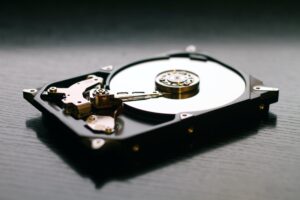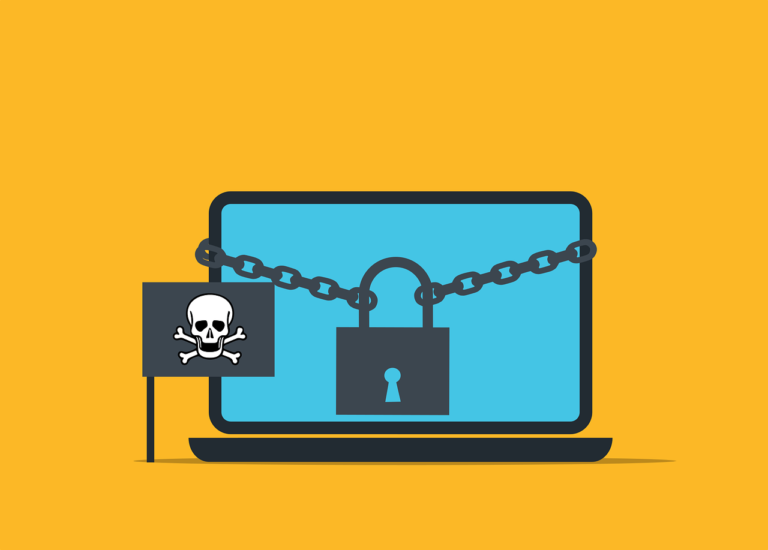WNE Security News
The most important cyber news to stay up to date with
How to Recover Data from Hard Drives and Electronic Devices

WNE Security Publisher
1/09/2023

Need Your Data Recovered?
Have it done by experts by clicking the button below to learn more about our data recovery process and to schedule a free meeting today!
Recovering data from hard drives and electronic devices involves employing specific techniques and tools tailored to different data loss scenarios. Understanding the nature of the data loss, whether due to accidental deletion, hardware failure, corruption, damage, or encryption, is crucial to determining the appropriate recovery approach. By following systematic steps, utilizing reliable software, and, in some cases, seeking professional assistance, it’s possible to retrieve lost, corrupted, or inaccessible data from various electronic storage mediums. If you are looking for expert assistance with a Data Recovery Guarantee policy, Click Here to learn more about how we can help you retrieve data while with holding its full integrity and legal usability in litigations.
Data loss can strike unexpectedly, whether due to accidental deletion, hardware failure, corruption, or even malicious attacks. Losing important files can be a distressing experience, but in many cases, the data is recoverable with the right tools and techniques. Here, we’ll delve into the methods of data recovery from various electronic devices, including hard drives, SSDs, USB drives, and more, addressing scenarios where data might be lost, corrupted, damaged, encrypted, or inaccessible.
Understanding Data Loss Scenarios
1. Accidental Deletion
When files are deleted from a storage device, they’re often moved to the recycle bin or trash, making them seemingly retrievable. However, even after emptying the recycle bin, the data remains on the drive until overwritten by new files. To recover accidentally deleted files:
- Stop Writing New Data: Avoid saving new files to the affected drive to prevent overwriting the deleted data.
- Use Recovery Software: Utilize reputable data recovery software like Recuva, EaseUS Data Recovery Wizard, or Disk Drill. These tools scan the drive for recoverable data and restore deleted files in many cases.
2. Hardware Failure
Hardware failure can be catastrophic and might require professional intervention. Symptoms include:
- Strange Noises: Clicking, grinding, or buzzing sounds from the drive.
- Drive Not Recognized: The drive not appearing in the system or being inaccessible.
- System Crashes: Frequent system crashes or errors when accessing the drive.
For hardware failure:
- Cease Using the Drive: Immediately stop using the device to prevent further damage.
- Consult Professionals: Seek assistance from data recovery specialists or companies with expertise in handling hardware failures.
3. File Corruption
File corruption often occurs due to sudden power loss, software errors, or malware attacks. Signs of corrupted files include:
- Inability to Open Files: Files refusing to open or displaying errors.
- Unexpected File Behavior: Files appearing garbled or incomplete.
To recover from file corruption:
- Use File Repair Tools: Some software like File Repair, Stellar File Repair, or built-in repair features in specific applications can help repair corrupted files.
- Restore from Backups: If available, restore the affected files from a previous backup.
4. Data Damage
Physical damage to devices requires careful handling:
- Avoid Further Damage: Do not attempt to power on or repair physically damaged devices yourself.
- Consult Experts: Professional data recovery services can help salvage data from physically damaged devices using specialized tools and cleanroom facilities.
5. Encryption or Inaccessibility
Encrypted or password-protected data presents unique challenges:
- Have Correct Credentials: Ensure you have the correct passwords or decryption keys.
- Specialized Software or Services: Utilize specialized software or seek assistance from experts to decrypt and access the data.
Steps to Recover Data
1. Stop Using the Drive Immediately
As soon as data loss is noticed, cease using the affected device to prevent further overwriting of the lost data. Continued use of the drive may diminish the chances of successful recovery as new data might overwrite the space previously occupied by the lost files.
2. Assess the Nature of Data Loss
Understanding the cause and nature of data loss is crucial in determining the appropriate recovery method. Identify whether it’s accidental deletion, file corruption, hardware failure, physical damage, or encryption that has led to the loss of data.
3. Select the Right Recovery Tool or Service
Depending on the nature of the data loss, choose the most suitable recovery method:
Software-Based Recovery:
- Utilize reliable and proven data recovery software such as EaseUS Data Recovery Wizard, Recuva, or Disk Drill. These tools typically involve scanning the drive or device for recoverable data and offering options to restore deleted or corrupted files.
- Follow the software’s instructions carefully, specifying the drive or location to be scanned for lost data.
Professional Data Recovery Services:
- In cases of severe hardware failure, physical damage, or complex data loss scenarios, consider consulting professional data recovery services.
- Data recovery experts possess specialized tools, facilities, and expertise to recover data from heavily damaged or inaccessible devices.
4. Use the Recovery Software or Service Methodically
When using data recovery software:
- Carefully Follow Instructions: Adhere to the instructions provided by the software to ensure proper scanning and recovery.
- Selective Recovery: Choose specific files or types of data to recover, if the software provides such options.
- Save Recovered Data to a Different Location: Avoid saving recovered files back to the same drive to prevent overwriting.
For professional data recovery services:
- Consultation and Evaluation: Experts will assess the damage or situation and provide guidance on the feasibility of data recovery.
- Leave it to the Professionals: Allow the experts to handle the recovery process using their specialized tools and techniques.
5. Decrypt Encrypted Data (if applicable)
In cases involving encrypted data:
- Have the Correct Credentials: Ensure you possess the necessary passwords, keys, or authentication methods required to decrypt the data.
- Use Specialized Decryption Tools or Services: Utilize specialized software or seek assistance from experts who can assist in decrypting the data and making it accessible.
6. Protect Recovered Data
After successfully recovering the lost data:
- Back Up the Recovered Data: To prevent future data loss, immediately back up the recovered files to a different storage device or cloud storage.
- Continue Preventative Measures: Establish regular backup routines and data protection practices to avoid future data loss incidents.
By following these steps systematically and selecting the appropriate method for the specific data loss scenario, individuals can significantly improve their chances of successfully recovering lost or inaccessible data from hard drives and electronic devices.
Precautions and Tips
- Regular Backups: Schedule regular backups to prevent complete data loss in case of unexpected events.
- Avoid Unreliable Software: Use trusted and reputable recovery software to avoid further damage to the affected drive.
- Handle Damaged Devices Carefully: Avoid mishandling physically damaged devices to prevent exacerbating the situation.
- Consult Experts: When in doubt, consult data recovery professionals for guidance and assistance.
https://azure.microsoft.com/en-us/
Data recovery from various electronic devices involves understanding the nature of data loss and employing the appropriate recovery techniques. Whether it’s accidental deletion, corruption, hardware failure, or encryption, taking prompt action and using reliable methods increases the likelihood of successful data recovery. Additionally, implementing preventive measures like regular backups is crucial in mitigating the impact of data loss incidents. For complex or severe cases, seeking professional assistance ensures a higher chance of recovering invaluable data from compromised devices.
Learn more about WNE Security products and services that can help keep you cyber safe.
Learn about WNE Security Digital Forensic Recovery and how it can help keep you cyber safe.

Stay updated with WNEsecurity’s news section for the latest in cybersecurity trends, threats, and protection measures.



